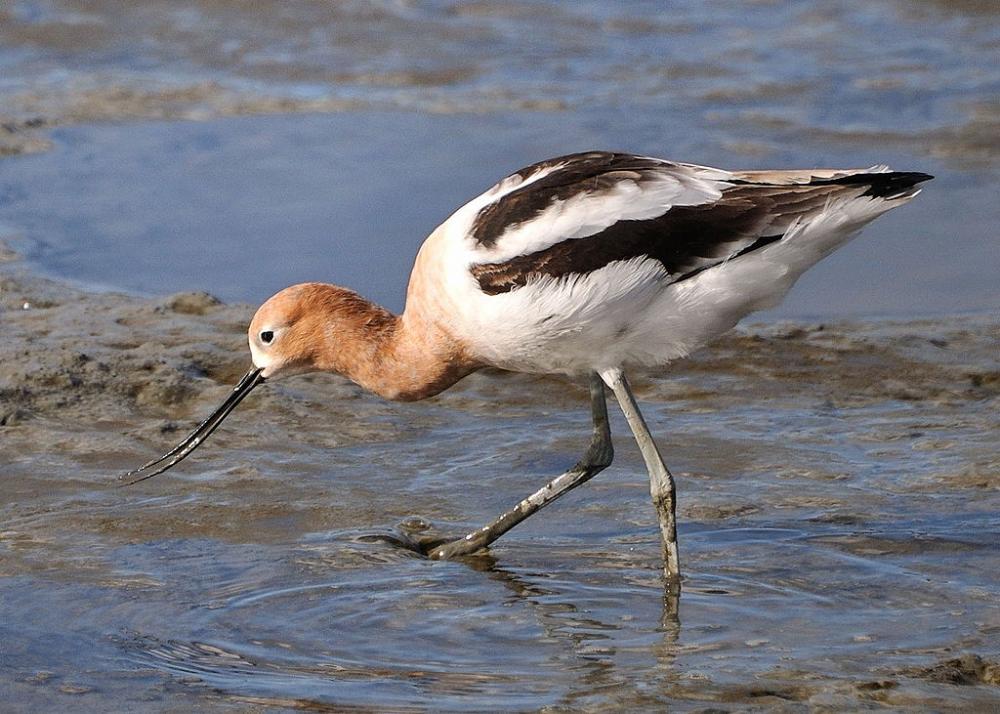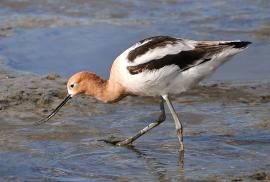Guide to Boreal Birds
Overview
Avocets feed much like spoonbills, sweeping their bills from side to side along the surface of the water to pick up crustaceans, aquatic insects, and floating seeds. They often feed in flocks, a line of birds advancing abreast, sometimes entirely submerging their heads as they sweep the water for food. During their southward migration every fall, a few American Avocets stray eastward to the Atlantic Coast, where they may be seen singly or in small flocks on shallow lagoons and coastal ponds. In the 19th century, there was a small breeding population in southern New Jersey, but they were hunted to near-extinction. Recently given complete protection, they seem to be gaining in number and before long may be reported breeding on the Atlantic Coast once again.
Description
16-20" (41-51 cm). A large, long-legged shorebird with a slender, upturned bill. Upperparts and wings patterned in black and white; underparts white. Head and neck rust-colored in summer, white in winter.
Voice
A loud repeated wheep.
Nesting
4 olive-buff eggs, spotted with brown and black, in a shallow depression sparsely lined with grass on a beach or mudflat. Often nests in loose colonies.
Habitat
Freshwater marshes and shallow marshy lakes; breeds locally in salt or brackish marshes. Many move to the coasts in winter.
Range/Migration
Breeds from interior Washington, Saskatchewan, and Minnesota south to California and Texas. Winters on West Coast north to California, on Gulf Coast, and in Florida. Rare but regular visitor on Atlantic Coast in fall.



